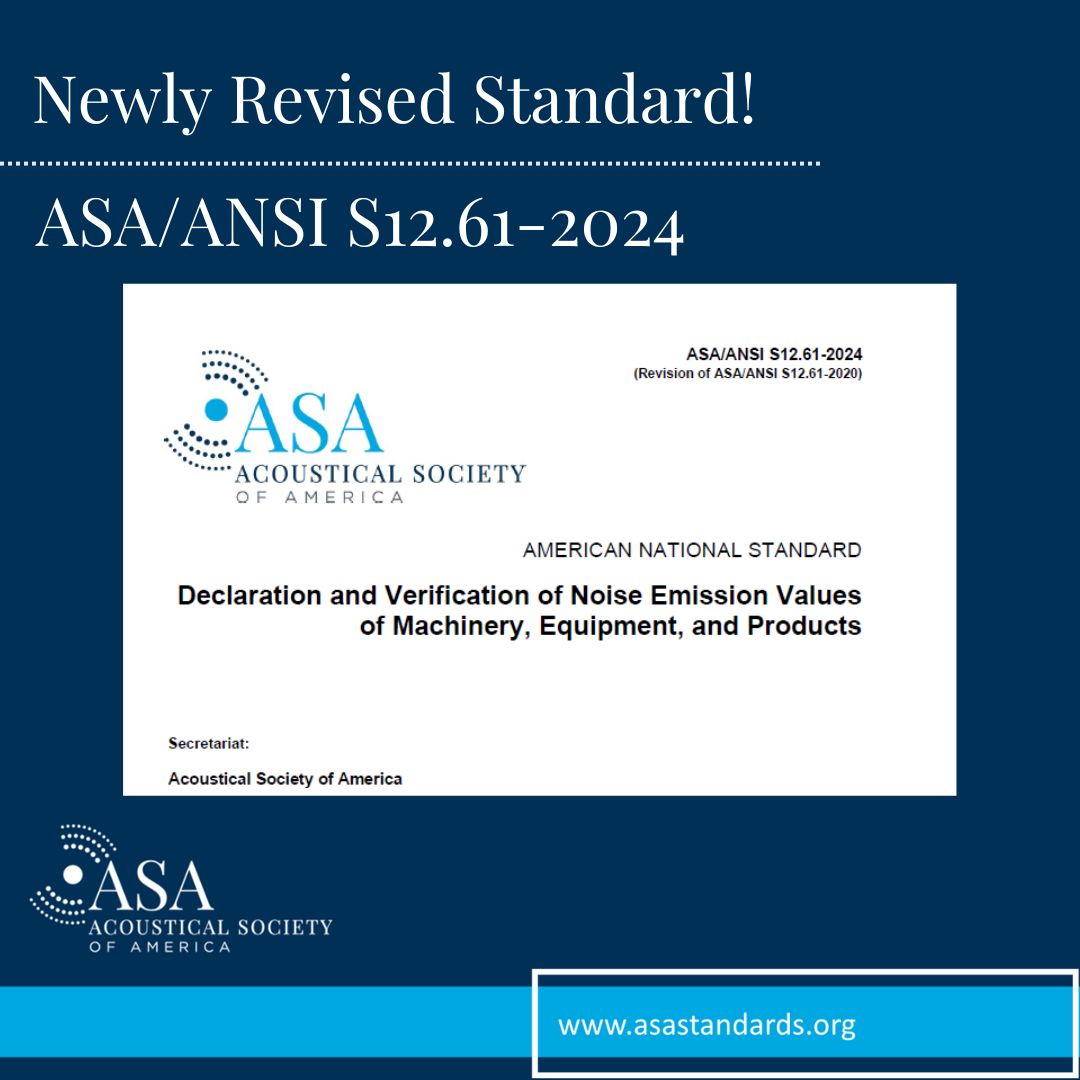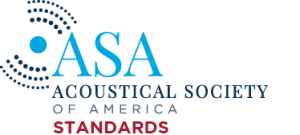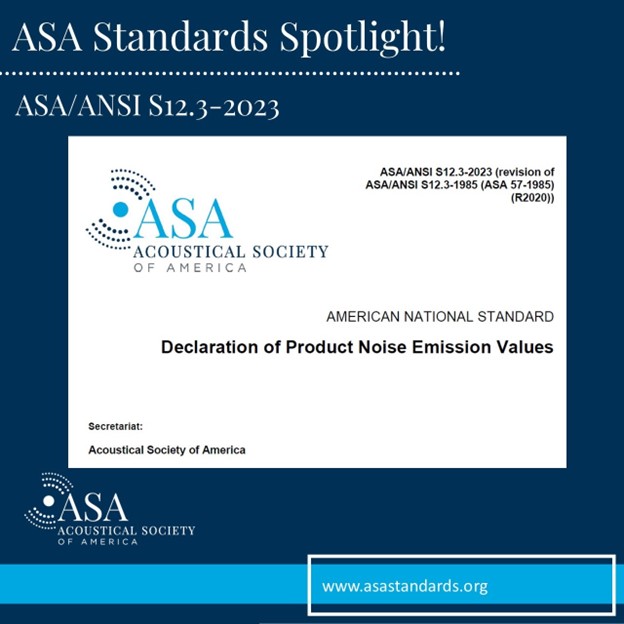What’s New in ASA Standards
ASA Standards are used by academia and practitioners – across corporations, manufacturers, universities, and government agencies and generating public confidence, building customer trust, ensuring safety, and opening business and market opportunities.
ASA/ANSI S12.3-2023
Declaration of Product Noise Emission Values
https://store.accuristech.com/asa/standards/asa-s12-3-2023?product_id=2574430
This Standard gives general requirements and guidelines for how to properly and uniformly provide product noise level information to the public. It specifies the noise emission values to be declared for a batch of machines, equipment, or products; the method for determining the mean A-weighted sound power level; and the method for determining applicable standard deviations. This standard is applicable to commercially available products that emit noise.
Who would use this standard? Manufacturers of noise-making products and purchasers thereof, and associated industry groups and trade associations. Also, NGOs and other groups concerned about noise. This Standard gives general requirements and guidelines for how to properly and uniformly provide product noise level information to the public.
What market does this standard serve? All prospective purchasers of commercially available products that emit acoustical noise, from individual consumers to large-scale organizations. Secondarily, this standard will serve the market for drafting derivative standards, regulations, purchase specifications, private contracts, and other documents dealing with product noise.
Why purchase this standard? Manufacturers of commercial products or their agents will learn and understand the method and requirements for declaring their product noise levels when they put them on the market (i.e., how to communicate noise level information to the public in a uniform fashion). There are not different options available for this (e.g., in other documents), making this standard the defining document.
In addition, standards organizations and industry groups will want to purchase this standard to provide them guidance in drafting derivative standards and test codes for specific product types. Finally, purchasing groups, regulators, NGOs, and private contractors would be interested in purchasing this standard to guide them in what to ask for or require in their purchasing specs or regulations relating to the noise emission levels of the products under consideration for purchase.
Ultimately, this standard will benefit users by providing them with the agreed-to and uniform method for declaring (publishing) the noise levels of products being considered for purchase.

ASA/ANSI S12.61-2024
Declaration and Verification of Noise Emission Values of Machinery, Equipment, and Products
https://store.accuristech.com/asa/standards/asa-s12-61-2024?product_id=2928825
The ANSI/ASA S12.61-2024 standard establishes uniform methods for declaring and presenting noise emission values for machinery, equipment, and consumer products. It applies to commercially available noise-emitting products, such as household appliances, IT products, industrial equipment, outdoor tools, and construction machinery. Noise emission data should be obtained using relevant ASA/ANSI S12 series standards to ensure consistency and reliability.
Who would use this standard? Manufacturers, regulatory agencies, product designers, acoustical engineers, testing laboratories, and industry professionals responsible for assessing and reporting noise emissions. It provides standardized methods for evaluating and declaring noise levels, ensuring compliance with industry best practices and regulatory requirements.
What market does this standard serve? This standard serves a wide range of industries that produce commercially available noise-emitting products, including: Consumer Electronics & Appliances, Industrial & Manufacturing Equipment Outdoor Power Equipment Construction & Heavy Machinery, Technology & Office Equipment
Why purchase this standard? If you need to measure, report, or regulate product noise levels, this standard is a must-have. It provides clear, reliable guidelines for manufacturers to accurately declare noise emissions, helping businesses stay compliant and transparent. Regulators and purchasing groups can use it to set noise limits and ensure they’re getting products that meet their requirements. Industry organizations can also use it as a foundation for developing specific test codes for different product types. Whether you’re making, testing, or buying noise-emitting products, this standard helps ensure fair comparisons, better regulations, and smarter purchasing decisions.


